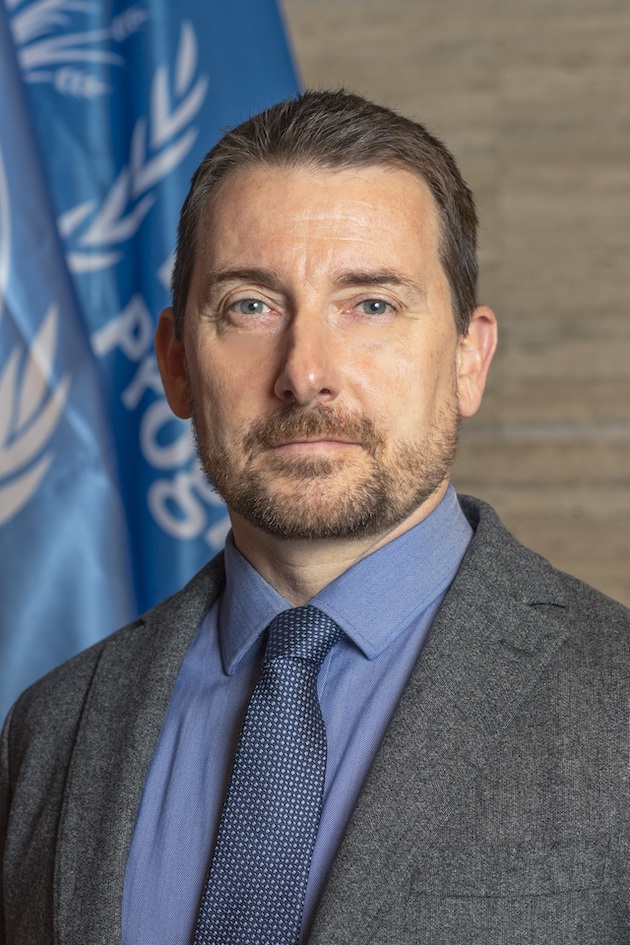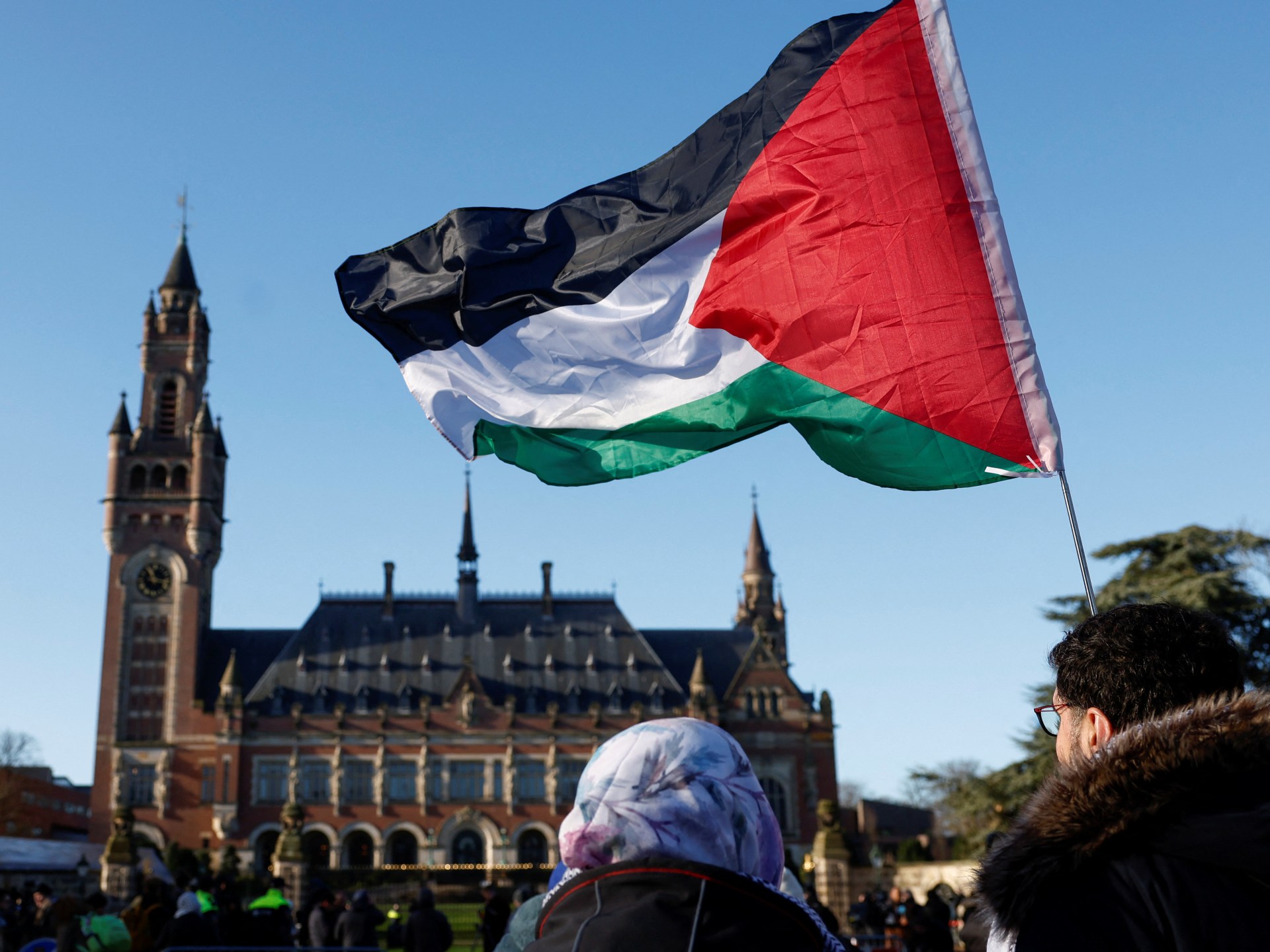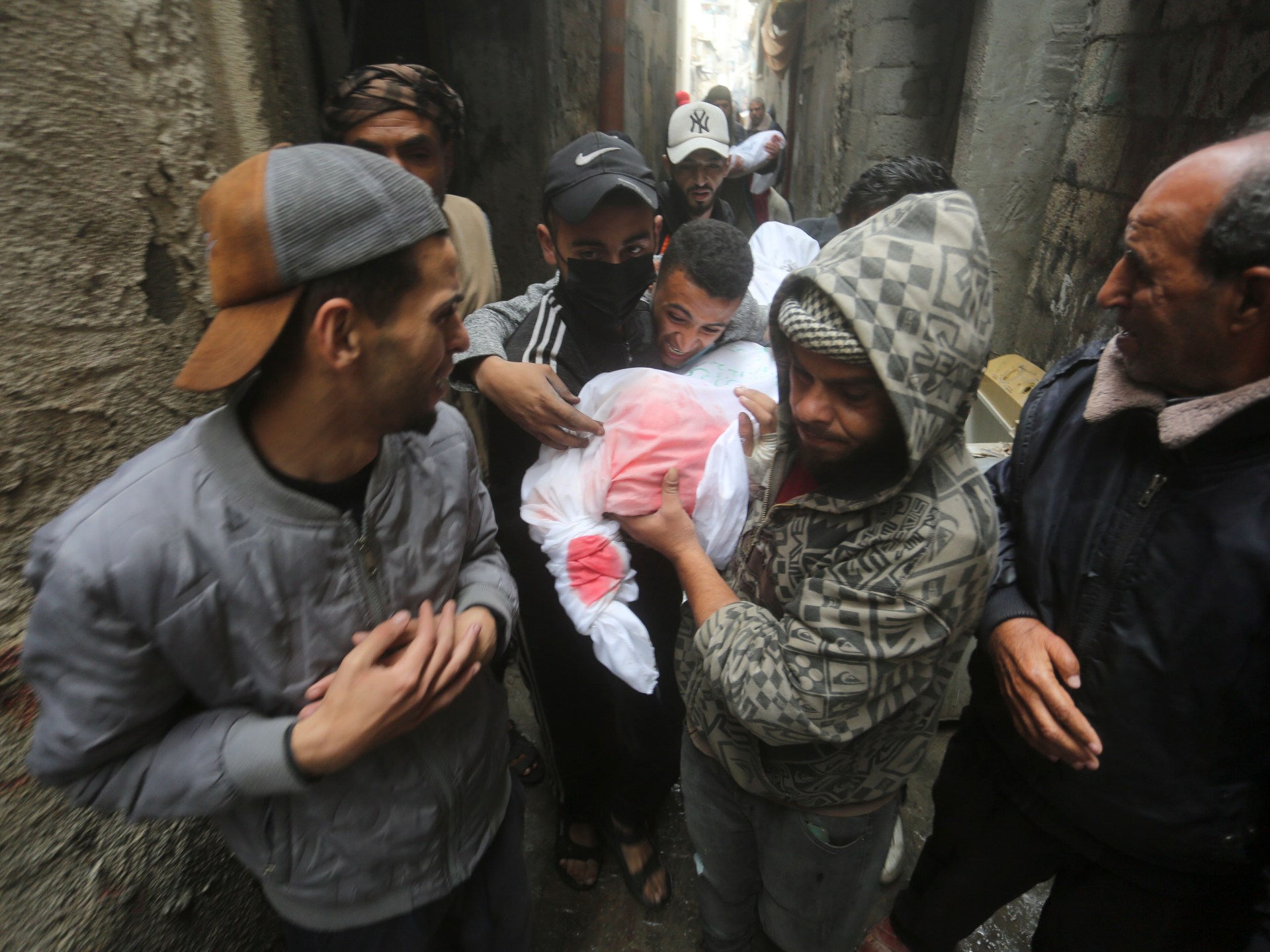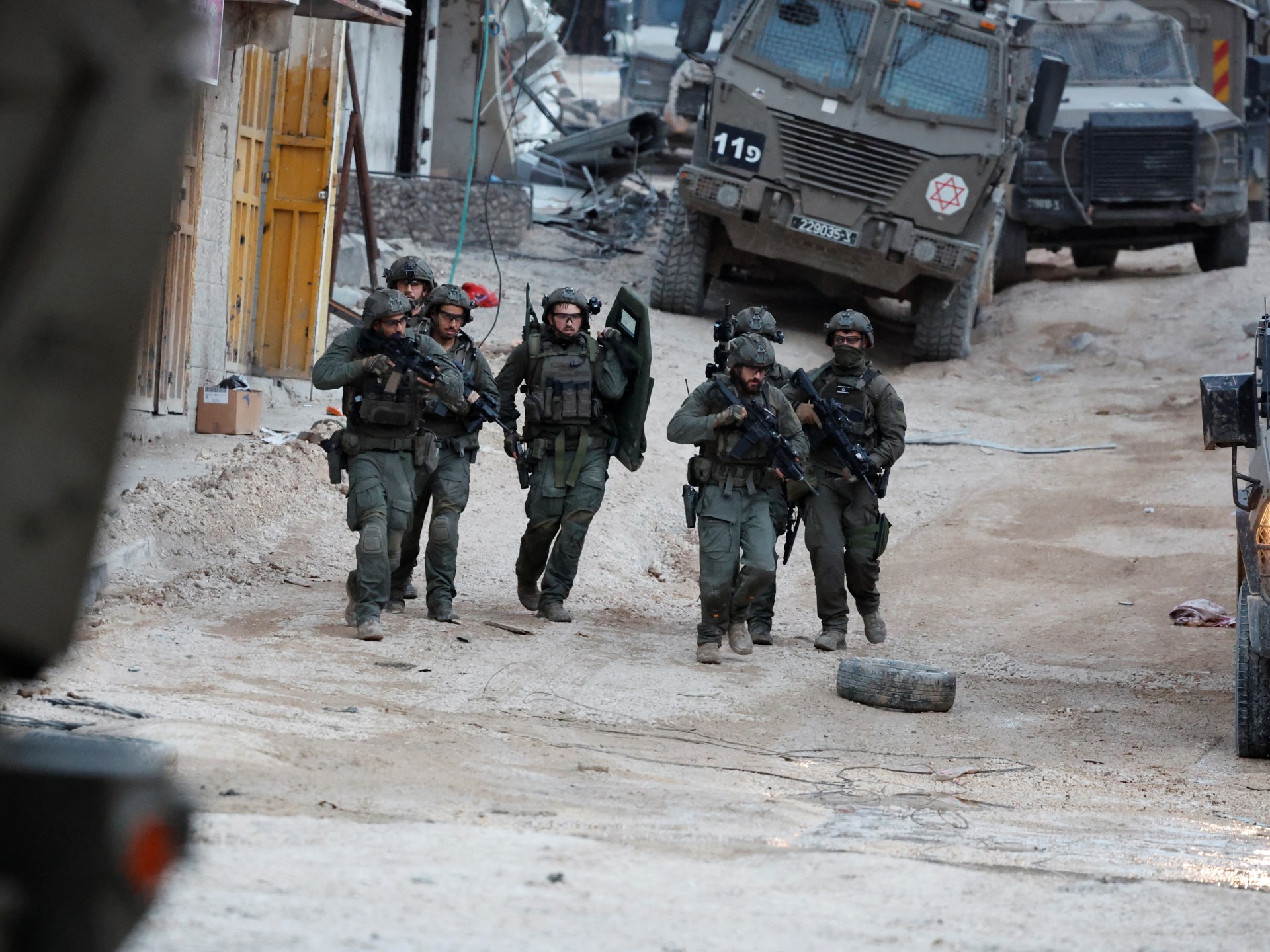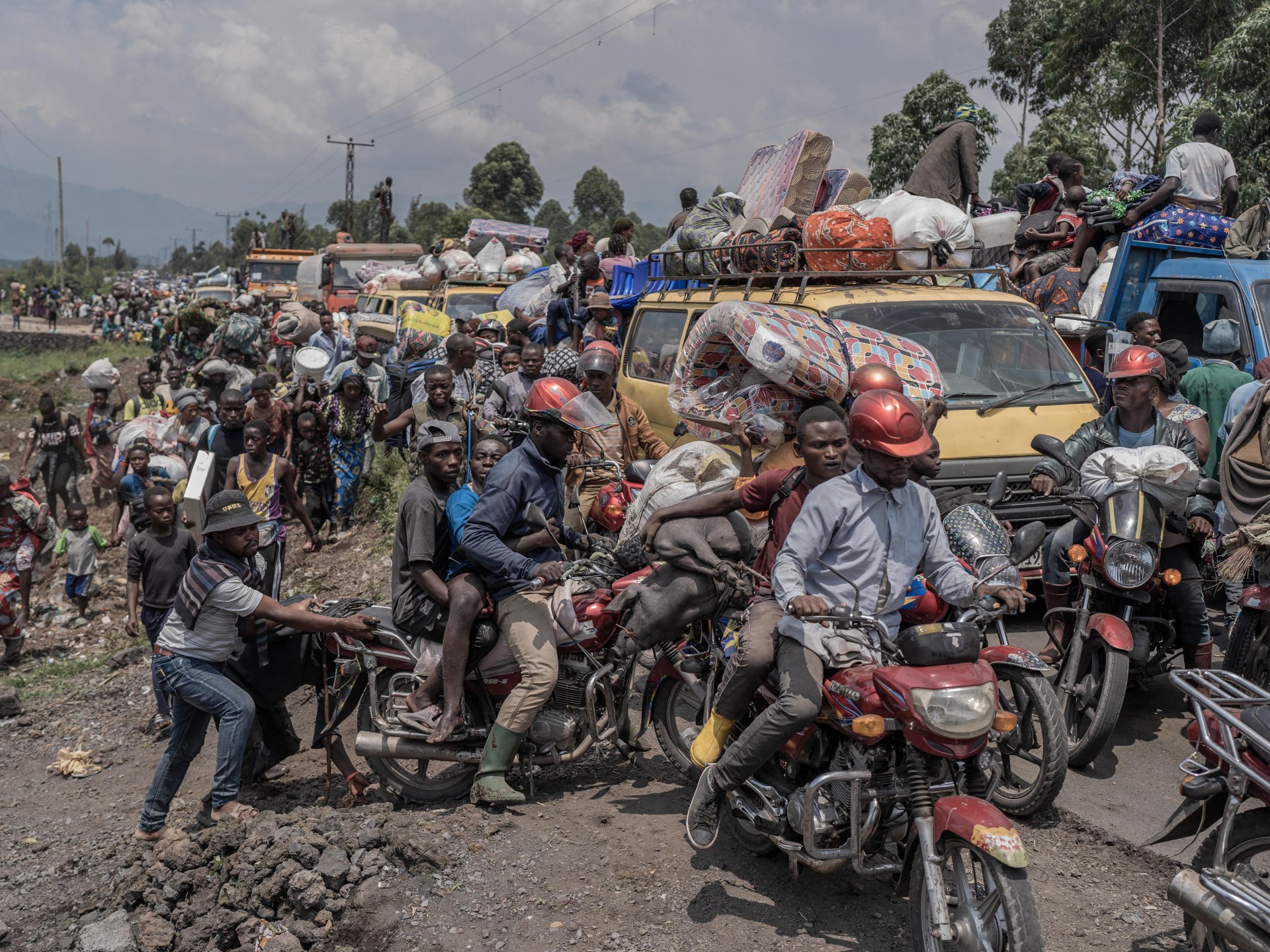Time to Convert Climate Change Rhetoric into Action, Says WFP’s Gernot Laganda — Global Issues
HYDERABAD, INDIA, Nov 14 (IPS) – ‘If you ask what climate justice is, then the litmus test for climate justice is at the local level. So, climate justice needs to be judged by how many people are protected from climate-vulnerable conditions that they have no hand in creating.’ – Gernot Laganda, Director of Climate Change Adaptation and Disaster Risk Reduction at the United Nations World Food Programme (WFP)
It is crucial to narrow the gaps and ensure that climate finance goes to where people are most vulnerable, says Gernot Laganda, Director of Climate Change Adaptation and Disaster Risk Reduction at the United Nations World Food Programme (WFP)—especially as the most fragile states only receive USD 2.1 per capita while non-fragile states receive USD 161.
Laganda leads WFP country offices to support governments dealing with the effects of climate change on food systems, prioritize concrete actions to avoid, reduce, or transfer growing climate risks in-country programs, and work with new and emerging climate finance mechanisms to implement adaptation solutions for the most vulnerable and food-insecure communities.
In this exclusive interview with IPS, Laganda speaks about a wide range of issues, including the climate disasters that WFP has responded to this year—and the impact of the humanitarian aid the programme has provided across the world, among the most vulnerable people who climate-induced disasters have directly impacted. As the world zooms towards 1.5 degrees of global warming, the number of climate disasters is rapidly increasing, and so is the requirement for more humanitarian aid. However, the current aid financing methods are not able to meet this unprecedented need, and there is always a gap between the requirement and the actual funding received.
As the 28th Conference of the Parties of the United Nations Framework Convention on Climate Change (COP28) draws near, Laganda speaks of the funding challenges humanitarian aid agencies are facing—an issue that requires urgent attention from the governments and investors gathering at the COP. He also speaks of his expectations from the negotiations, the actions, and the decisions that will determine the success of the conference.
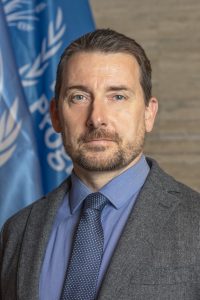
Here are excerpts from the interview:
IPS: Which climate disasters did WFP respond to this year, and what kind of assistance did you provide?
Laganda: This year, of course, is a very peculiar year because it is really on track to become the warmest year on record. We have an El Niño phenomenon that overlays with global warming. Last month, on the 2nd of October, we had 86 days above the 1.5-degree threshold, so this year was out of the ordinary. This year, in March, we had tropical cyclone Freddie, which hit Madagascar, Mozambique, and Malawi. This was the longest-lasting tropical cyclone on record for Africa. It killed 860 people with floods and landslides. But it had a peculiar behavior. Typically, cyclones are fed by heated energy from the oceans, so they lose intensity when they touch land. But Freddie developed in February on the west coast of Australia, across the Indian Ocean, made landfall in Madagascar, then to Mozambique before returning to the ocean. But then it gained more energy and hit land again in Malawi. So, it’s a very uncommon behavior.
The response related to humanitarian assistance, of course, is related to supporting the governments with relief operations. For example, in Malawi, which was badly hit by cyclone Freddie, we helped distribute two months of food basket items targeting the most affected districts. We used schools as entry points to provide emergency rations. And, in the case of farmers from whom we buy food for local school meal programs, we substituted these with a feeding (scheme) to allow farmers to recover from the loss. So, there’s the typical humanitarian response machine that kicks into gear. These climate extremes are now happening more frequently; they hit more strongly, and this humanitarian response needs more finances, which is currently not there in the system.
To give you some numbers, in the Horn of Africa, we had an unprecedented sequence of drought in three countries – Somalia, Ethiopia, and Kenya; 47,000 people died in Somalia during the drought in 2022 (and) WFP distributed food assistance to a record 4.7 million people.
IPS: What kind of loss and damage did these disasters cause?
Laganda: First, there’s a national picture, and then after the disaster, you have the loss and damage figures, and the context is very different in different parts of a country, especially in countries like Somalia, where there is also an overlay of climate effects on conflict, on inflation and economic shock. However, the biggest impact is on housing and natural capital.
IPS: Can you elaborate further?
Laganda: Okay. For example, when you are a farmer in a developing country, you have several assets or capitals, including natural capital. This natural capital includes your natural resources like forest and fiber products, cattle, land, and soil. Then, there are disaster preparedness elements like insurance coverage, access to savings, and access to insurance protection. If these capitals are strong and intact, you can recover from disaster shocks and overcome the disaster impact shocks. You can also recover if you have soil restoration, insurance coverage, and access to savings.
But when many of these natural capital areas are degraded or hit (as happened in these above-mentioned disasters), you have no protective shields.
IPS: Three years ago, at COP25, you had said that only 60 percent of the climate finance that’s needed in the aftermath of a disaster is funded, while 40 percent is not funded. Has this ratio changed since then? How?
Laganda: Unfortunately, humanitarian aid after disasters remains chronically underfunded. Also, over the period of five years, UN humanitarian appeals after climate disasters were only funded 54 percent on average. At the same time, we see that these disasters increase, and our requirements are now eight times higher than they were 20 years ago. So, we are really in a time when humanitarian needs are increasing very sharply, especially when it comes to people suffering from acute hunger, but there is not enough financing to meet all these needs after climate disasters.
It’s the same with climate finance. As the recently published Adaptation Gap Report shows, there is a massive gap in investment in adaptation. Also, from 2014 to 2021, the climate finance available per capita in non-fragile states was USD 161, while it was only USD 2.1 in extremely fragile states. So, there is a huge disparity between where that money goes and where people are most vulnerable. This means two things: we need to make sure there is more funding in the system for the humanitarian needs after climate disasters, but it also means we need to invest much more strategically and faster because we are already in the state where we are reaching the 1.5-degree threshold as mentioned in the Paris Agreement. So, we need more targeted efforts in climate projection and protection in the most vulnerable context.
IPS: What is the main reason behind this continued funding gap? Is there some sort of fatigue among funders, or is this just a case of reduced priority?
Laganda: Many disasters are now compound and protracted. That means there are many countries and sectors where humanitarian aid needs to stay for decades. So, it’s not like there is one disaster, then there is humanitarian relief, and then it’s over. You have decades of humanitarian needs that never stop, right? So, it’s really hard to sustain that financing commitment in an ever-growing number of countries where people have this acute humanitarian need. For example, the number of people facing acute hunger has doubled only in a span of three years. We have been seeing a situation where people are caught between these different risk drivers: conflict, economic shocks, and climate change. And so, the old models of humanitarian aid that we have just don’t work anymore.
IPS: Currently, all eyes are on the Loss and Damage Fund. Civil society is already alleging that the fund is compromised and that it lacks the commitment to human rights. What are your thoughts?
Laganda: The Loss and Damage Fund was a very difficult negotiation, and I think it’s understandable that the fund should be guided by human rights. If you ask what climate justice is, then the litmus test for climate justice is at the local level. So, climate justice needs to be judged by how many people are protected from climate-vulnerable conditions that they have no hand in creating. That’s ultimately what we all want to do. But the mechanism that we have available for loss and damage—this has been a very polarized conversation. I understand that there was some disappointment with the way the reference to human rights was being discussed, but I am sure that when this conversation happens again at COP28 in Dubai, there will be a great push to put this language back into the agreement.
At this point, there is a provisional way forward, and I do not think this will be a smooth process, but I do hope that at the end of COP28, there will be a functioning operational modality for a loss and damage facility because this is really a very important aspect to the entire climate change policy landscape.
A decade ago, we were excited about climate change mitigation and adaptation. But now we are failing at mitigation, and adaptation is too little too late. We need an expansion of this conversation from climate mitigation and adaptation to loss and damage, and I think at COP28, this will take center stage. I think it’s important to have that agreement because nobody wants to have a COP28 that is not successful, and that would be an important part of the success.
IPS: And what are your expectations from the COP28? What actions should be prioritized to combat climate-induced hunger?
Laganda: It’s a good question. When we stay on these three headlines – climate change mitigation, climate change adaptation, loss, and damage, it’s clear that on the mitigation side, we would like to see greater ambition, and where governments are making investments, the actions are compatible with the rhetoric because at the moment there is a gap between the rhetoric and the reality.
The Intended Nationally Determined Contributions (INDCs) need to be more ambitious. We need to bend the temperature curve – there is no question about it. We cannot adapt our way out of the problem. The Adaptation Gap report says there is only USD 21 billion in public financing per year. We need at least USD 40 billion, which is also the goal that the UN secretary-general has. Also, adaptation investment needs to happen much faster and in a less bureaucratic manner, so more funding and more efficient deployment of that financing. And, in loss and damage, we would like to see a successful conclusion to the negotiations so that a Loss and Damage Fund is established with operational criteria that live up to the needs. We have to protect vulnerable people on the frontline of the climate crisis. So, this loss and damage fund makes sure that vulnerable people are protected immediately and not five years from now because 2024 and 2025 are critical years as we are already crossing the 1.5-degree threshold of the Paris Agreement.
These are the expectations I have for COP28, and this is how we will judge its success by the end of the day.
IPS: Finally, do you think the ongoing conflict in Gaza and the conflict-effected humanitarian aid needs will overshadow the discussions of climate-induced humanitarian aid requirements in Dubai?
Laganda: COP28 is the first COP that dedicates an entire day to peace and fragility. There is, for the first time, a recognition that there is a link between climate and fragility and that there needs to be more investment in climate action in a fragile context and in a conflict-inflicted context. There really is a bridge between the climate theme and conflict theme, which will make us think about how we can place investments in places like Yemen, Syria, and Somalia. So, I don’t think this (political conflict) will overshadow it, but how climate risks and conflict risks intersect will be prominent.
IPS UN Bureau Report
Follow @IPSNewsUNBureau
Follow IPS News UN Bureau on Instagram
© Inter Press Service (2023) — All Rights ReservedOriginal source: Inter Press Service
Check out our Latest News and Follow us at Facebook
Original Source

